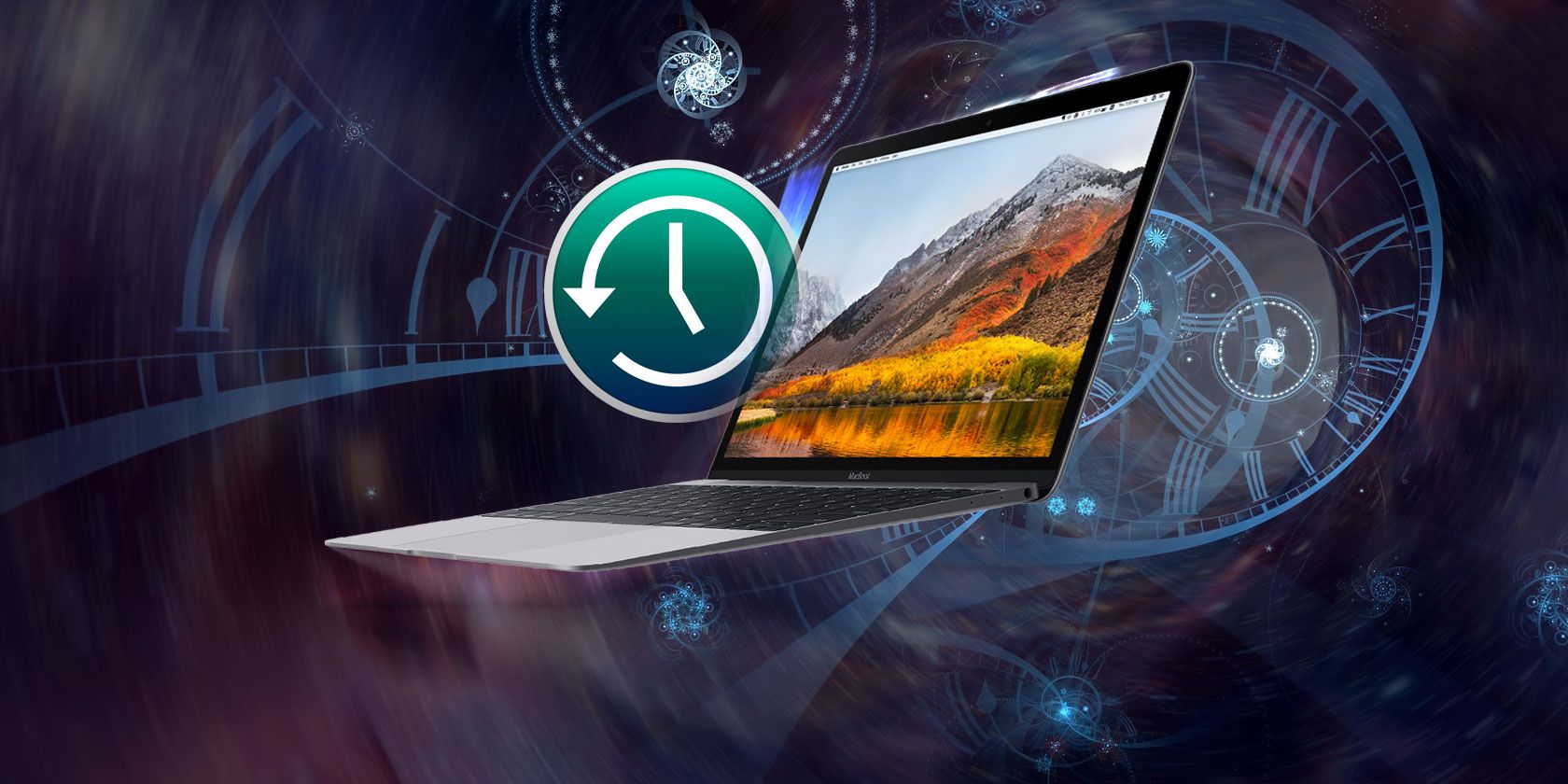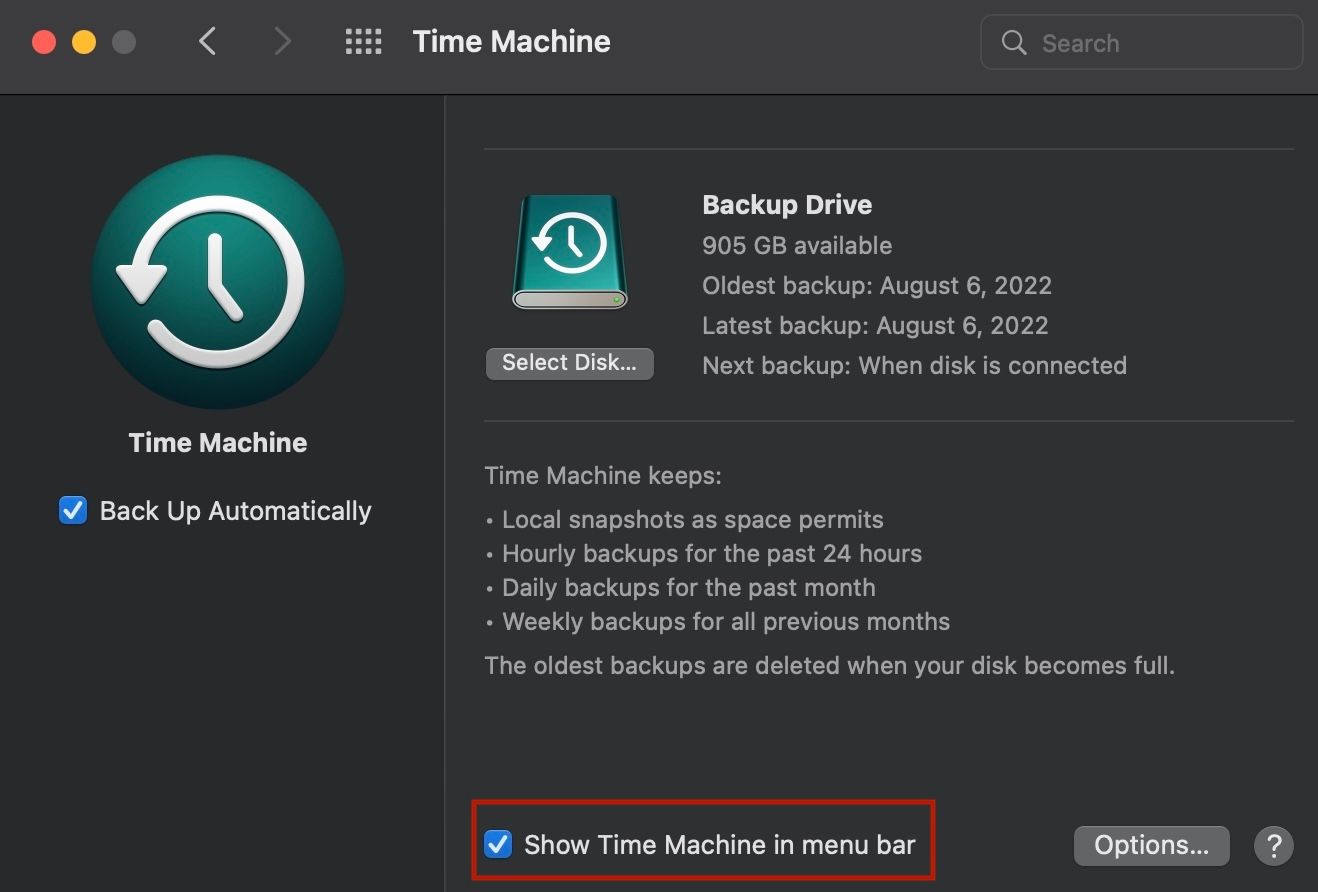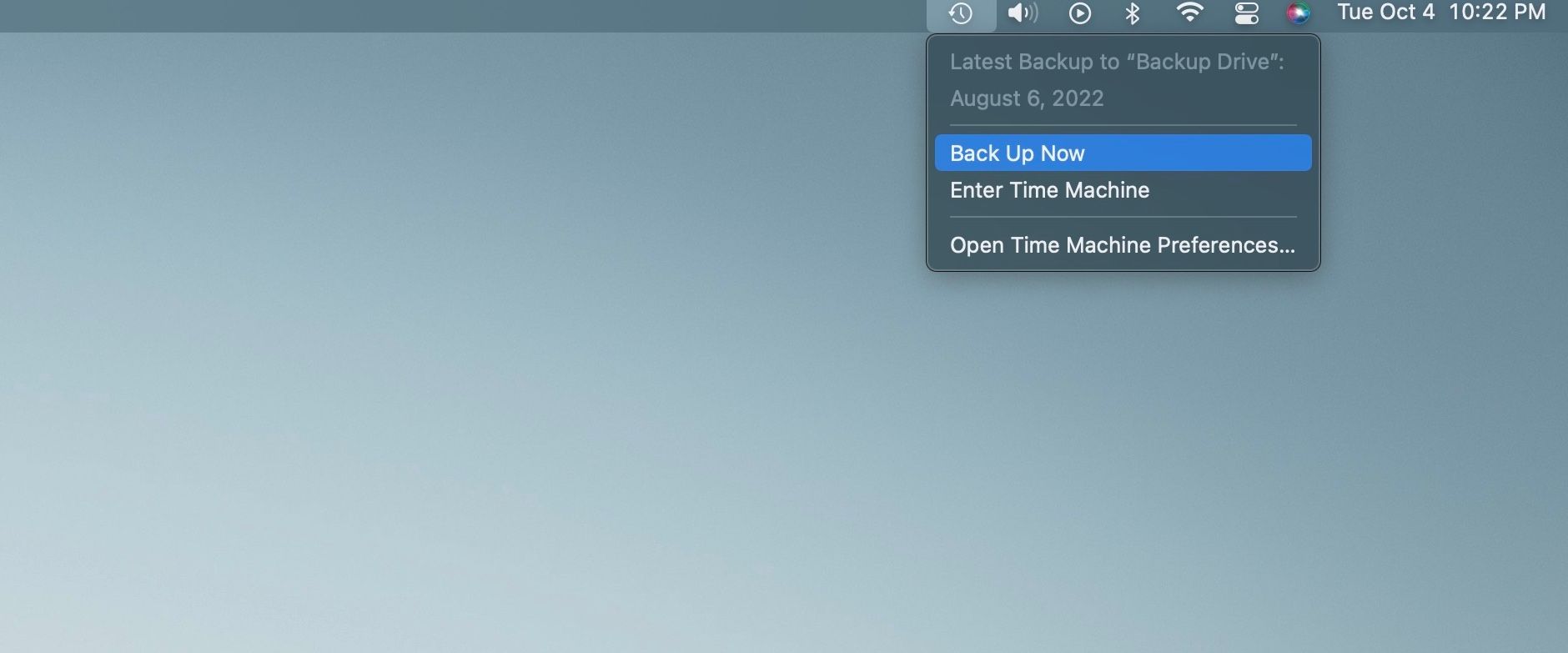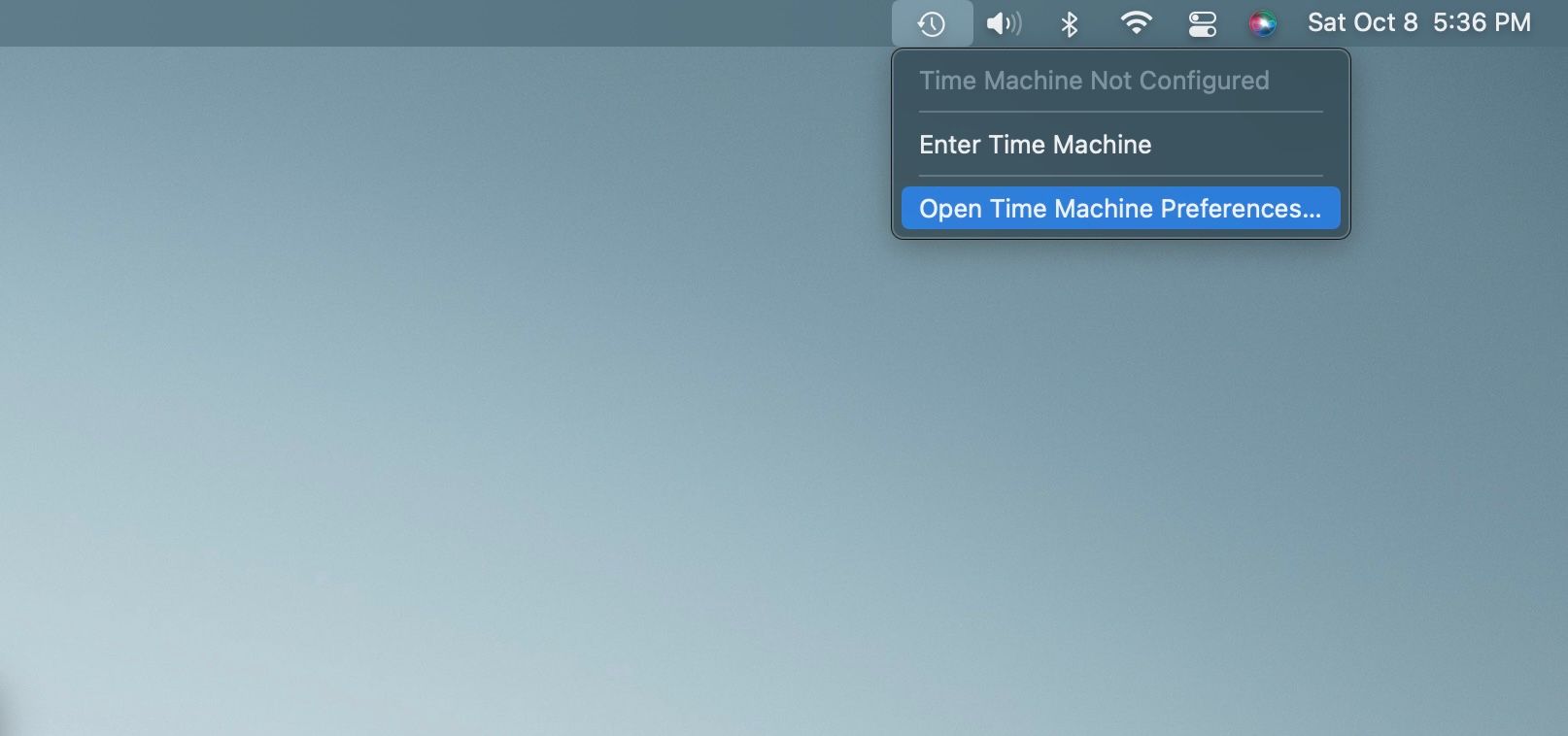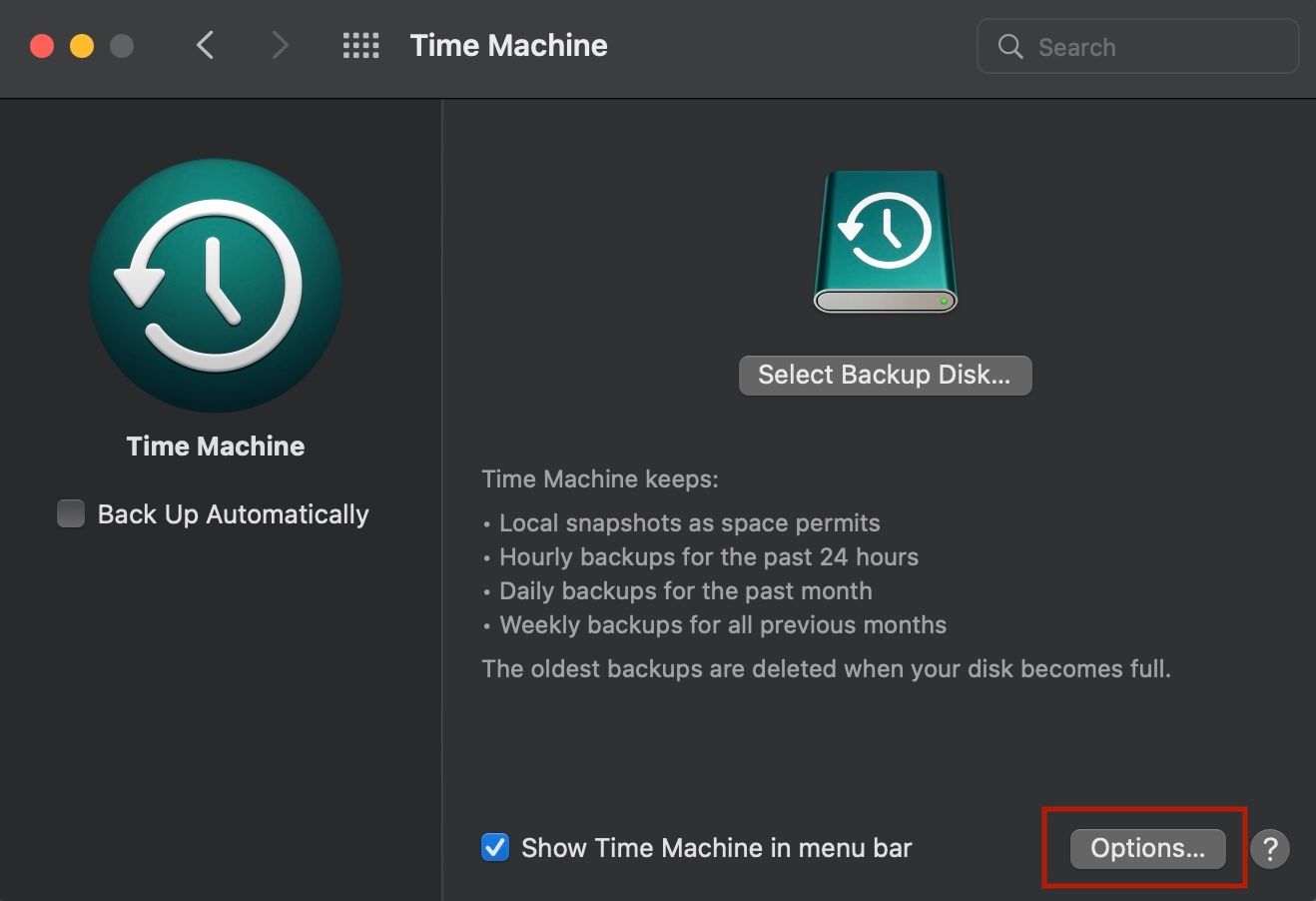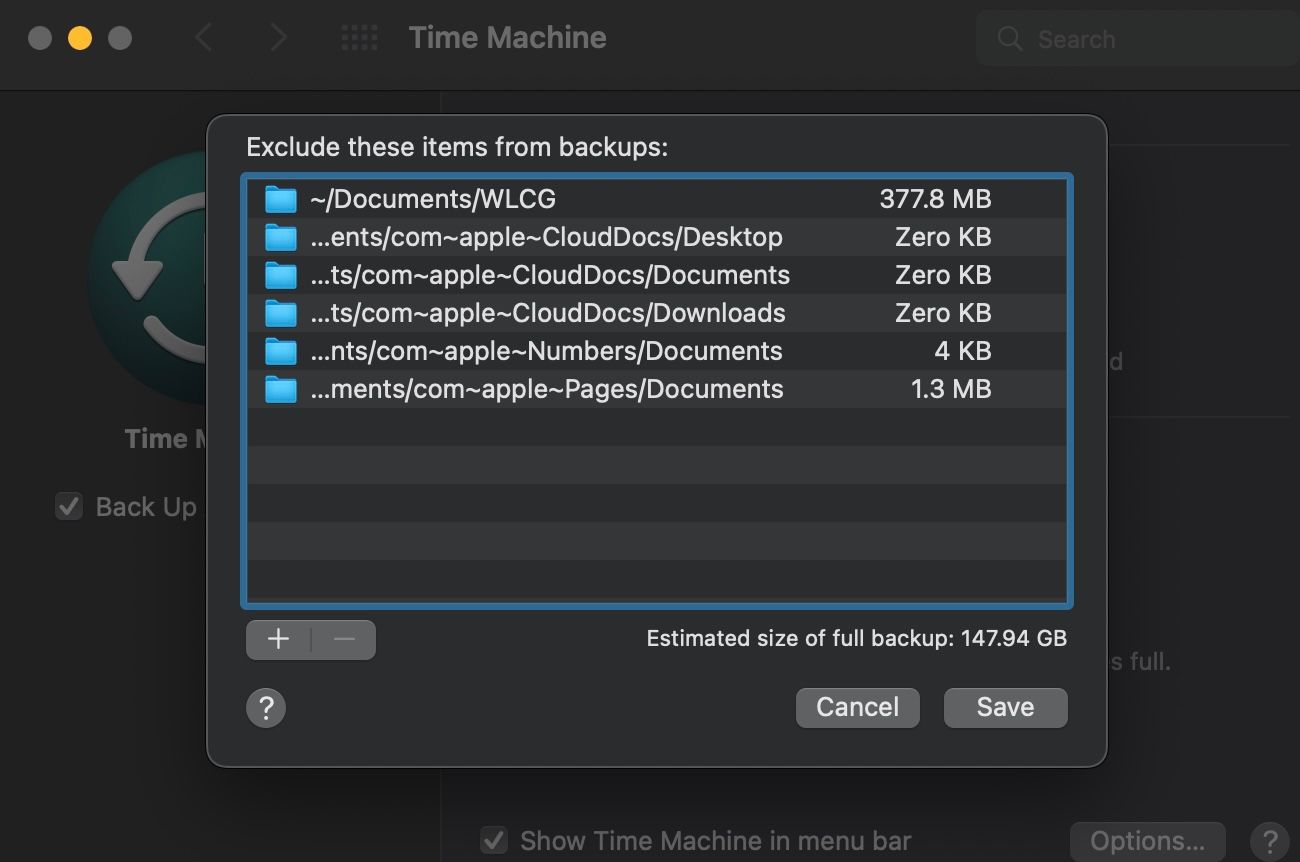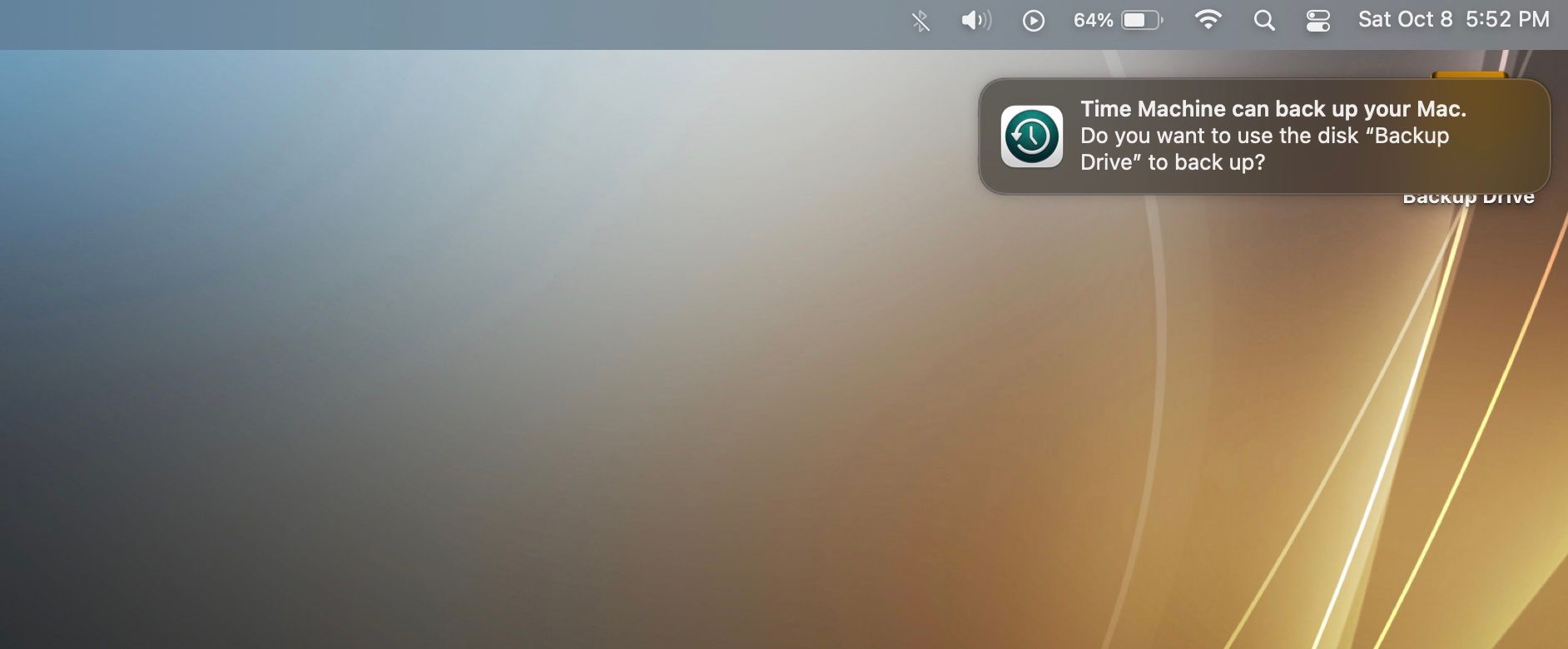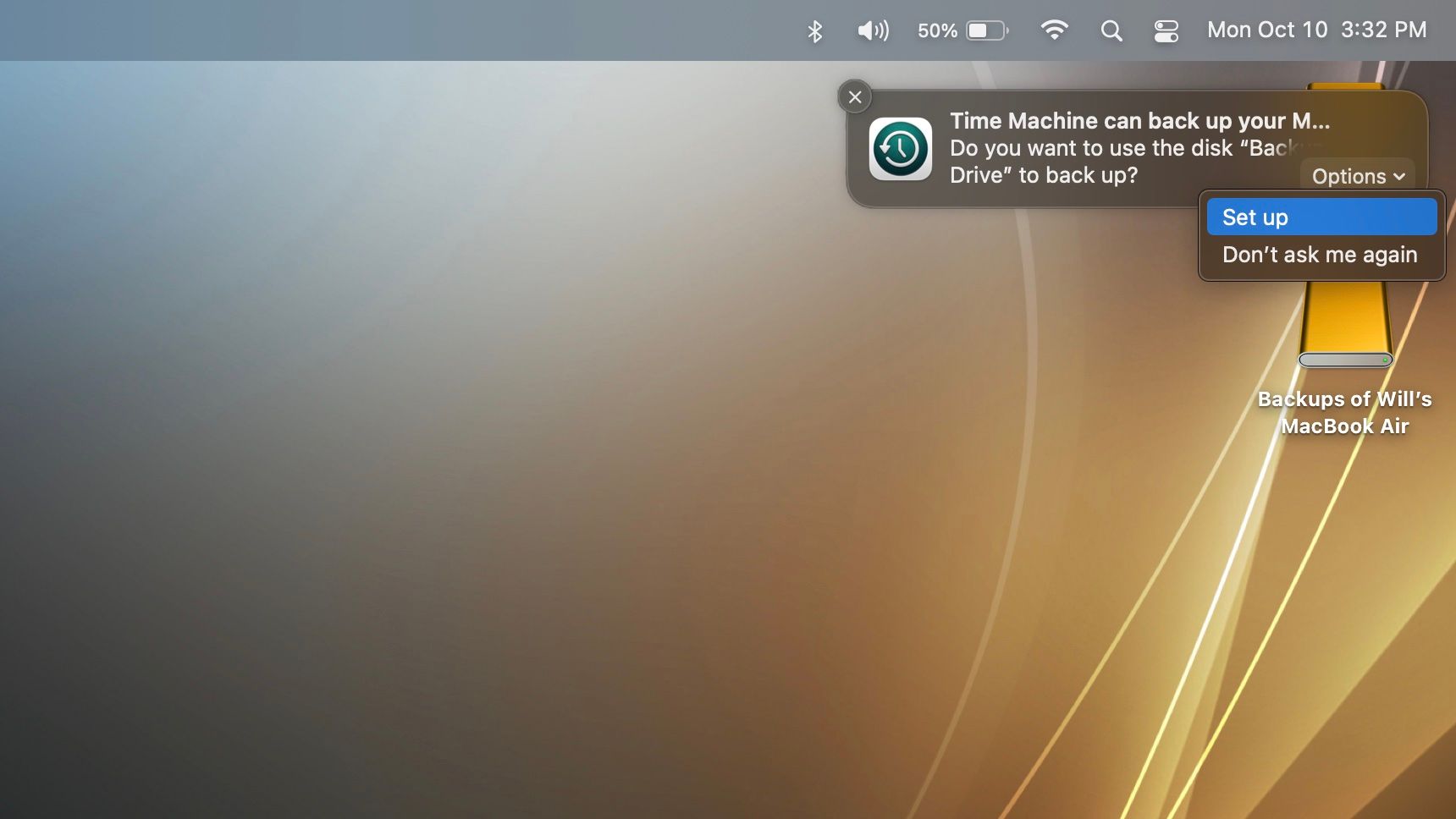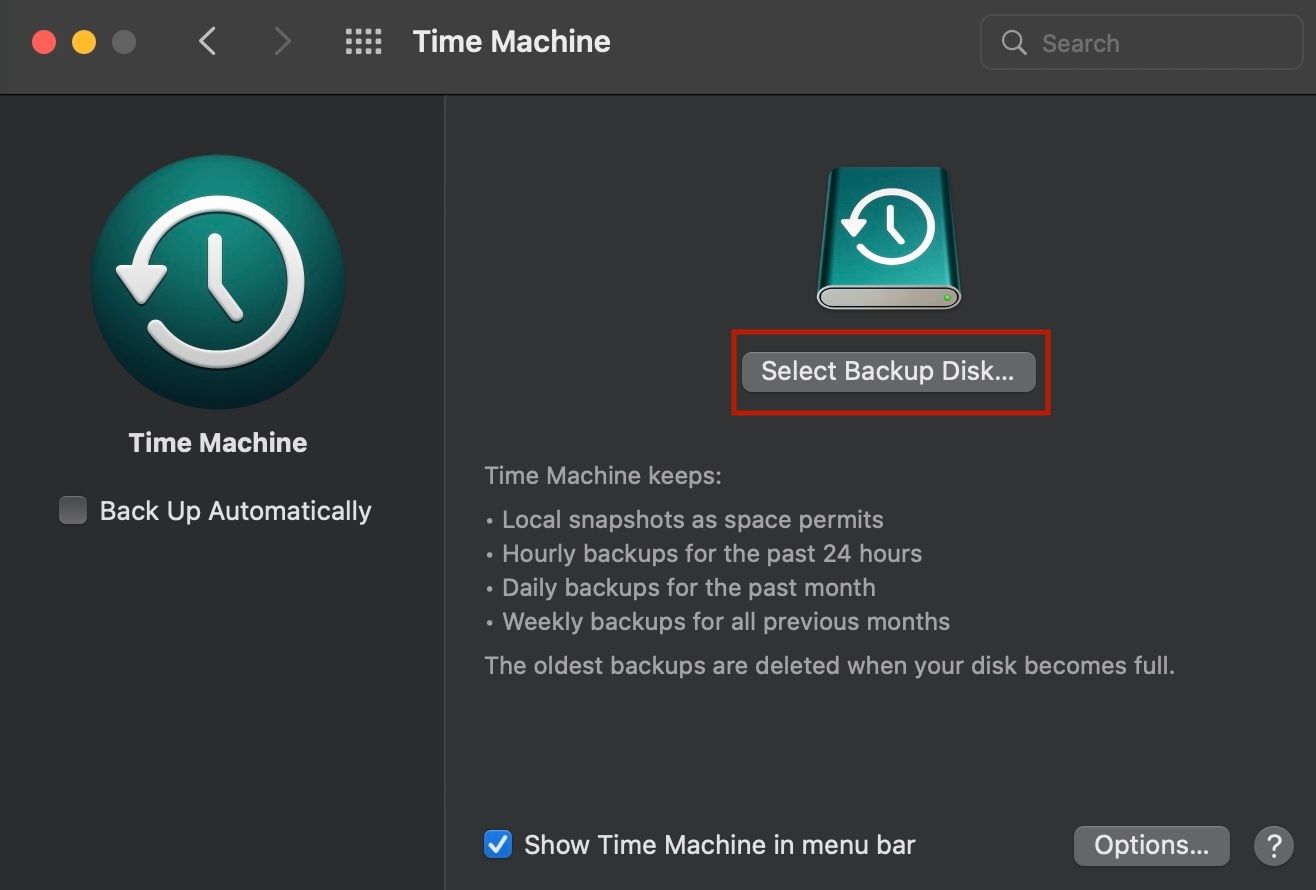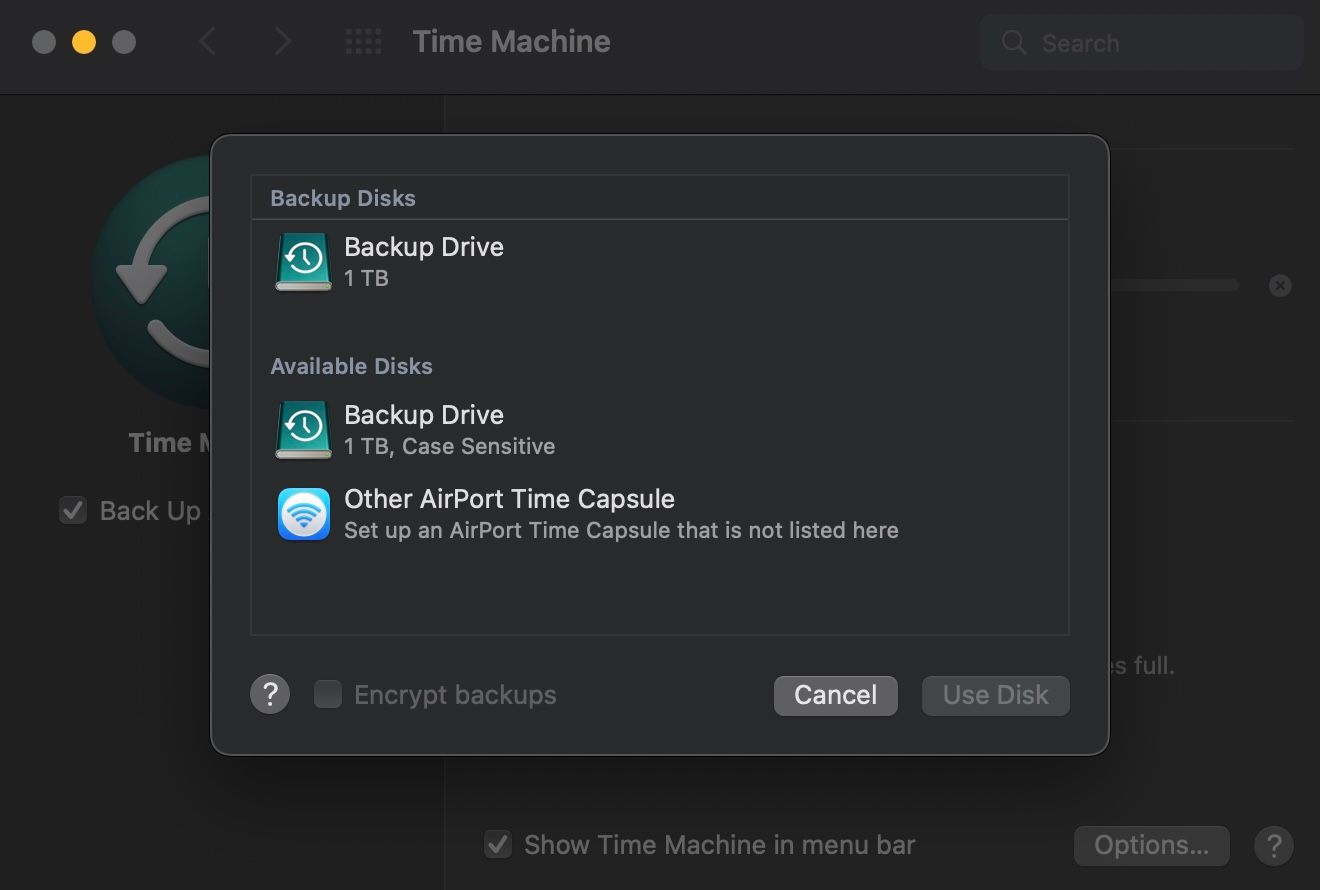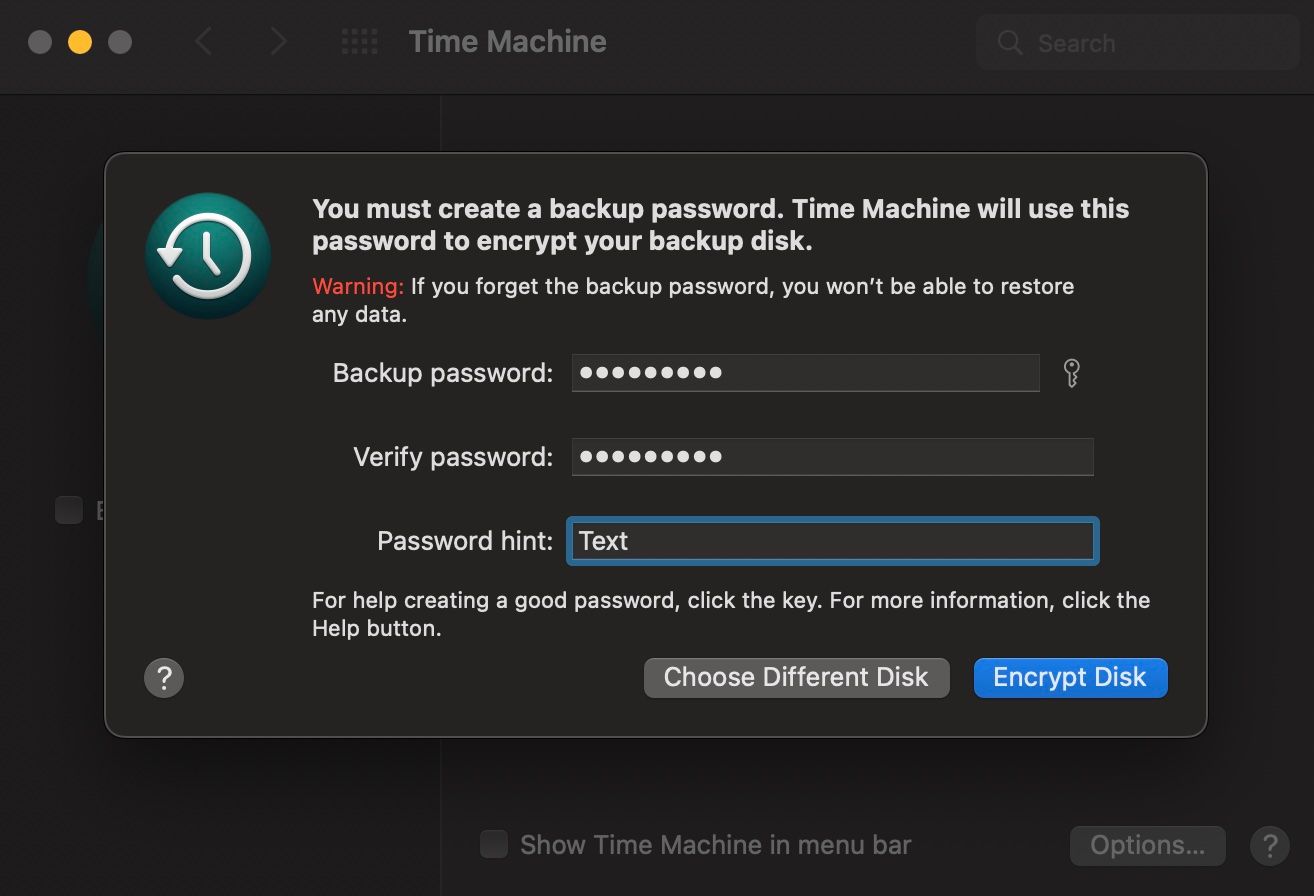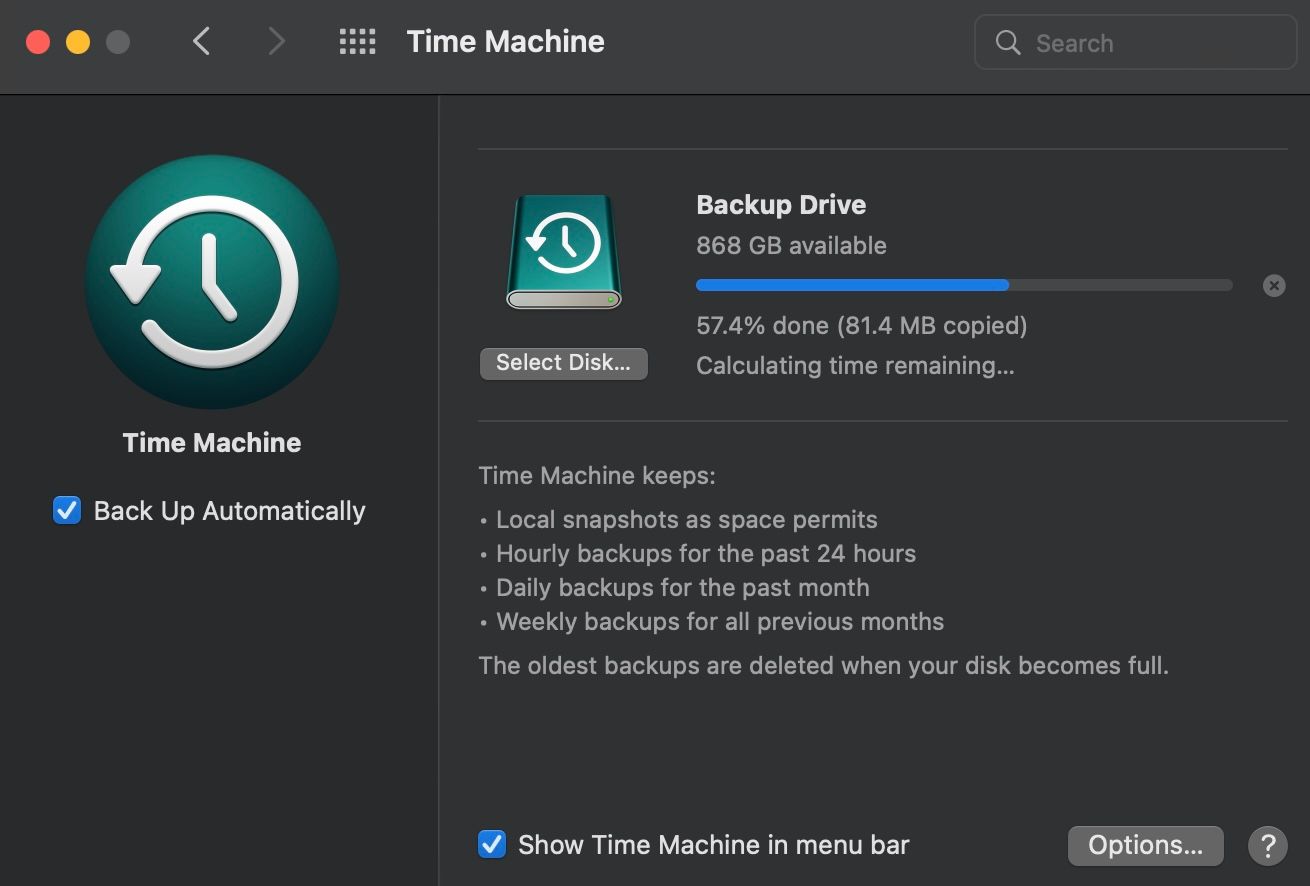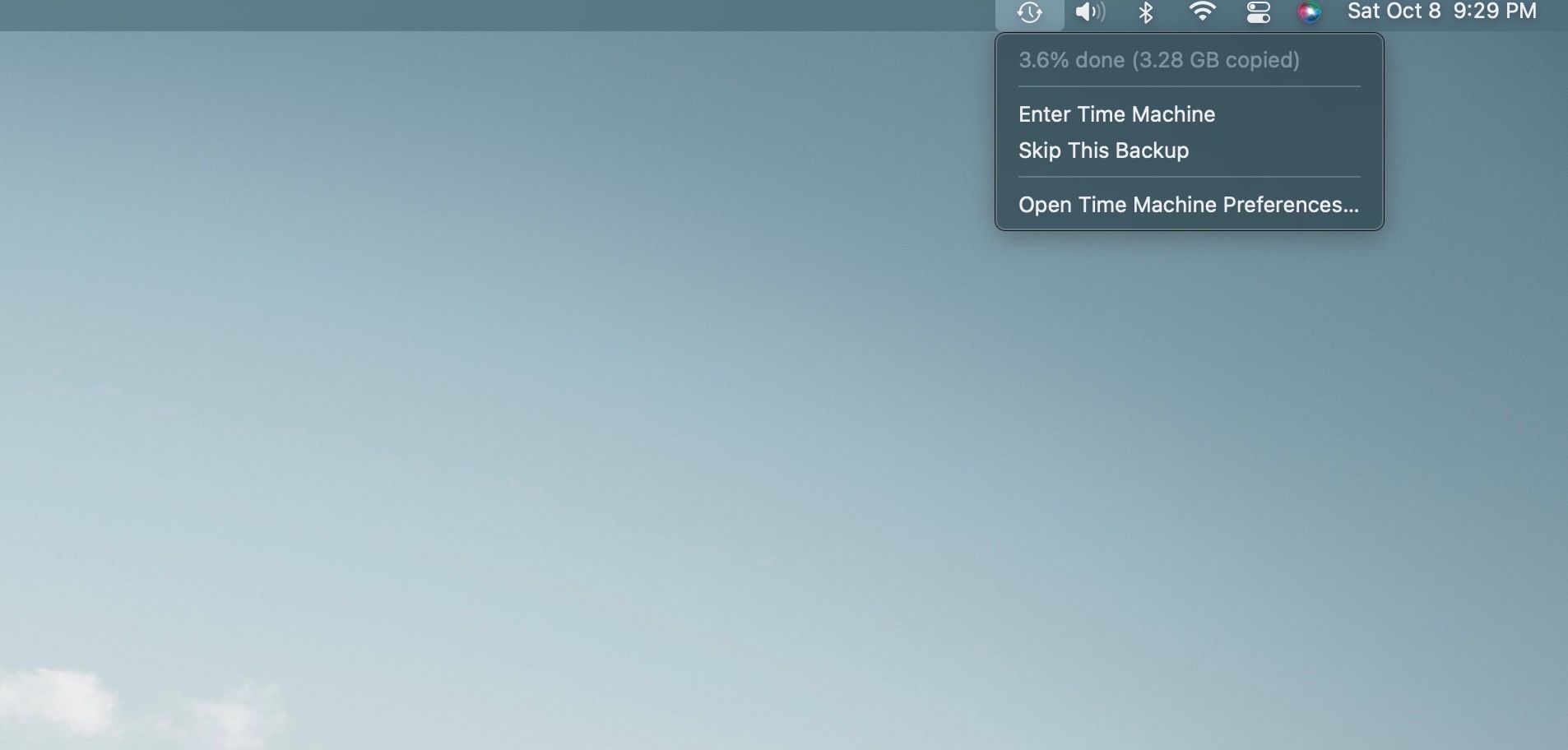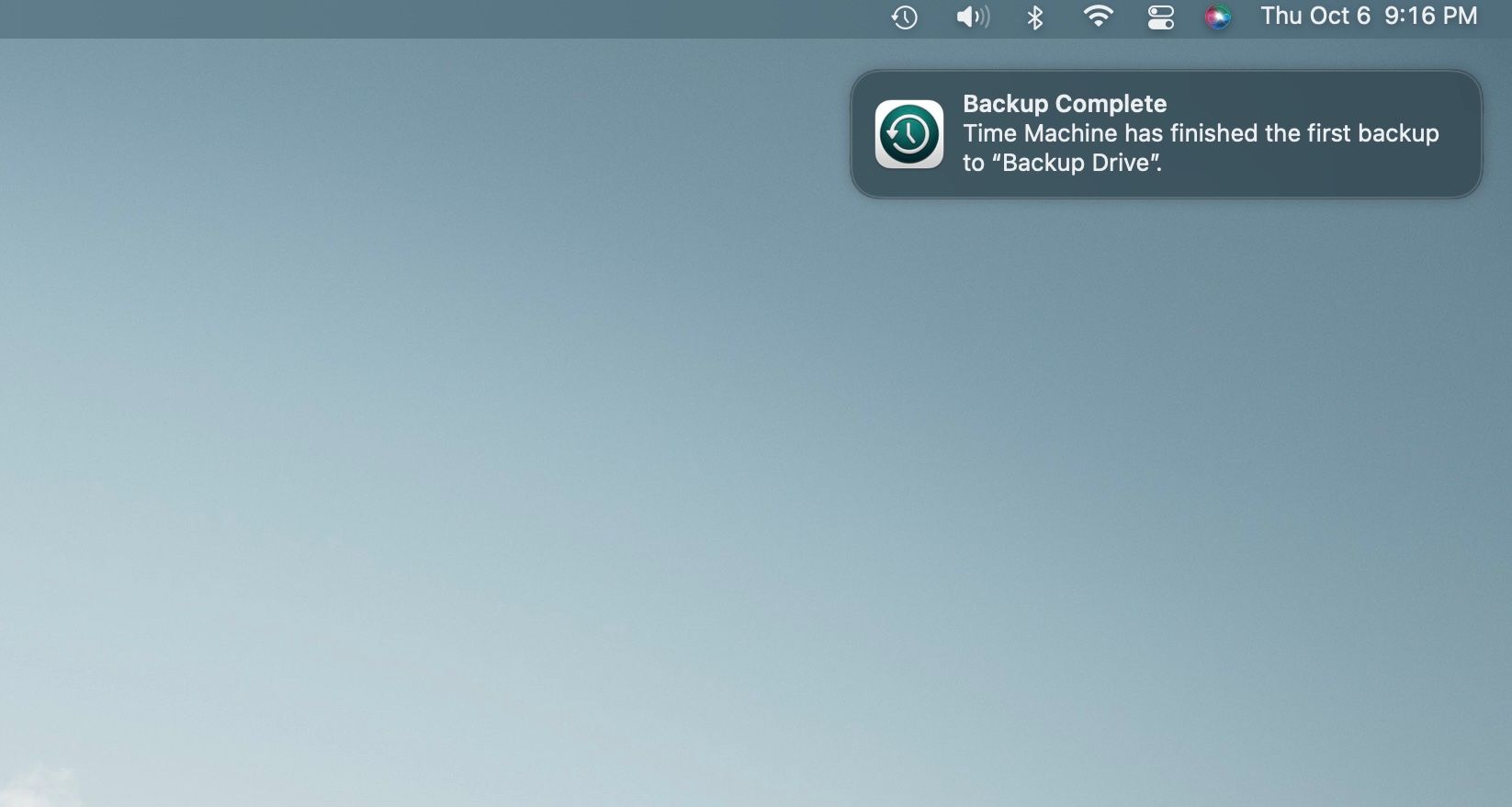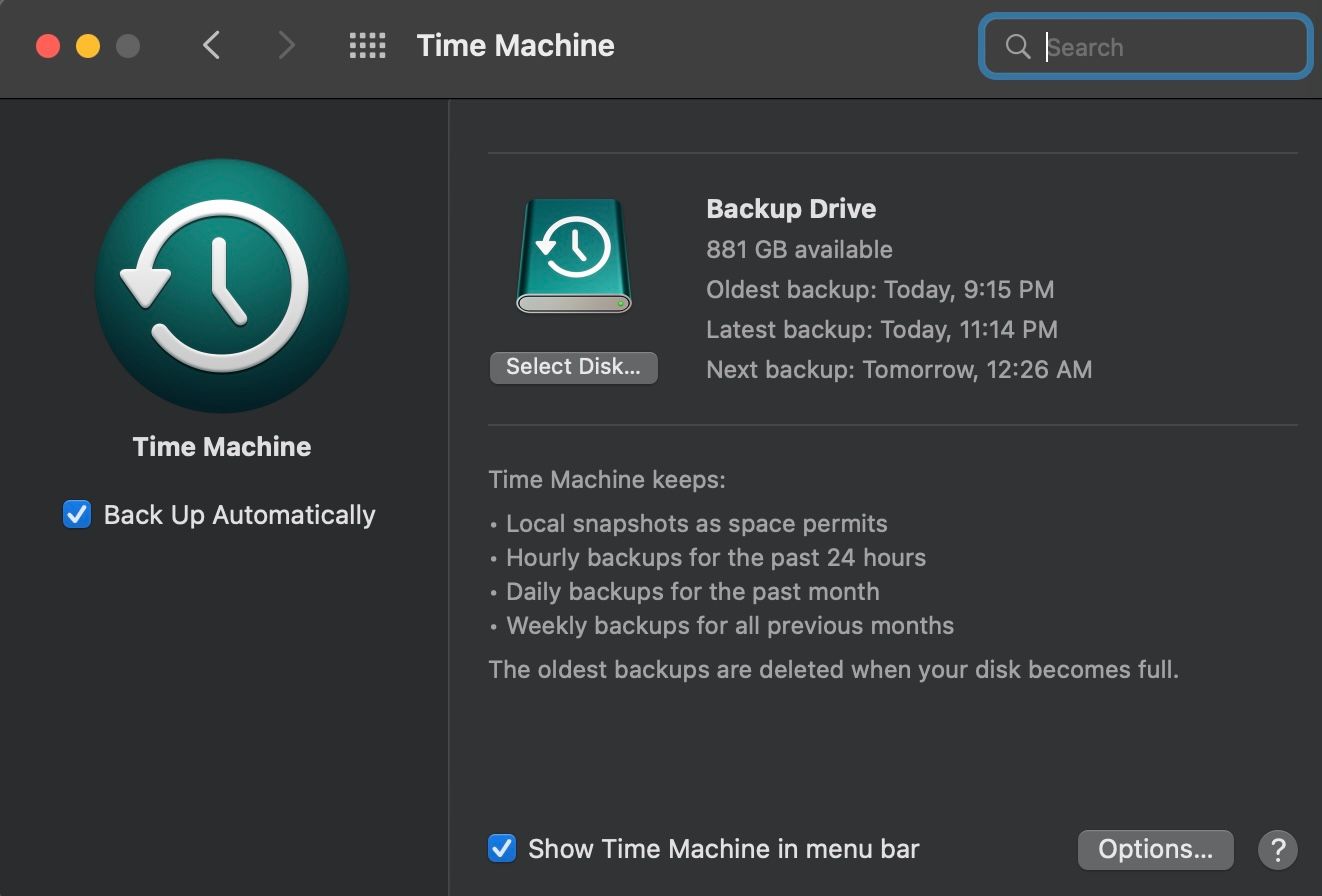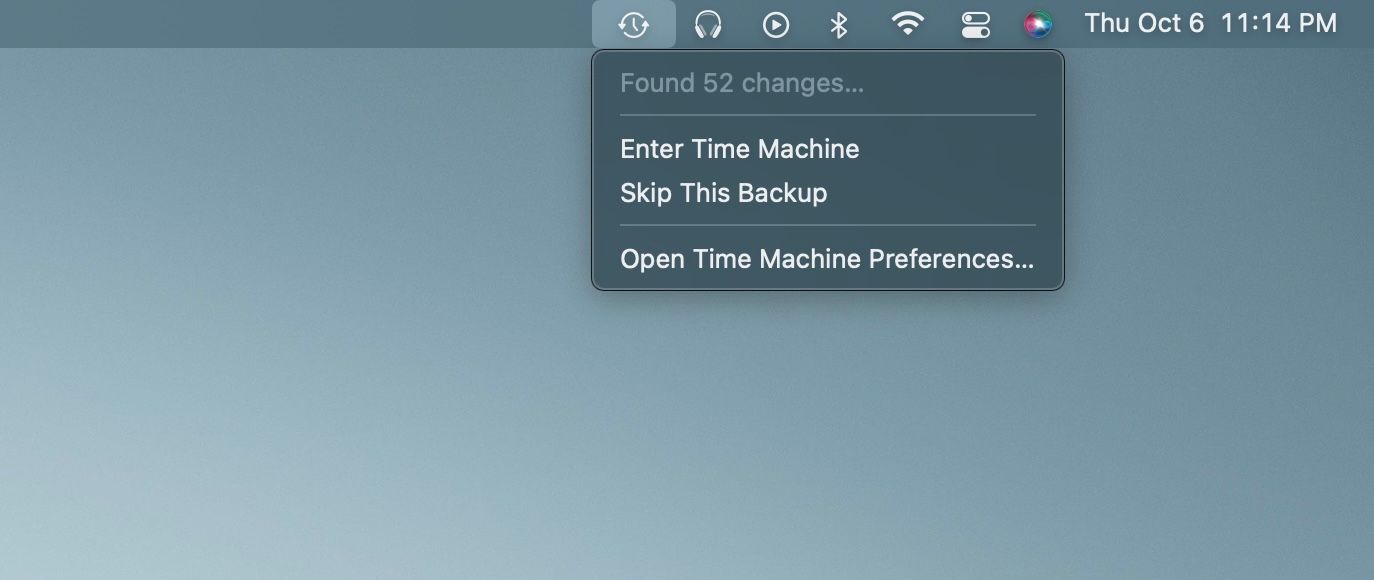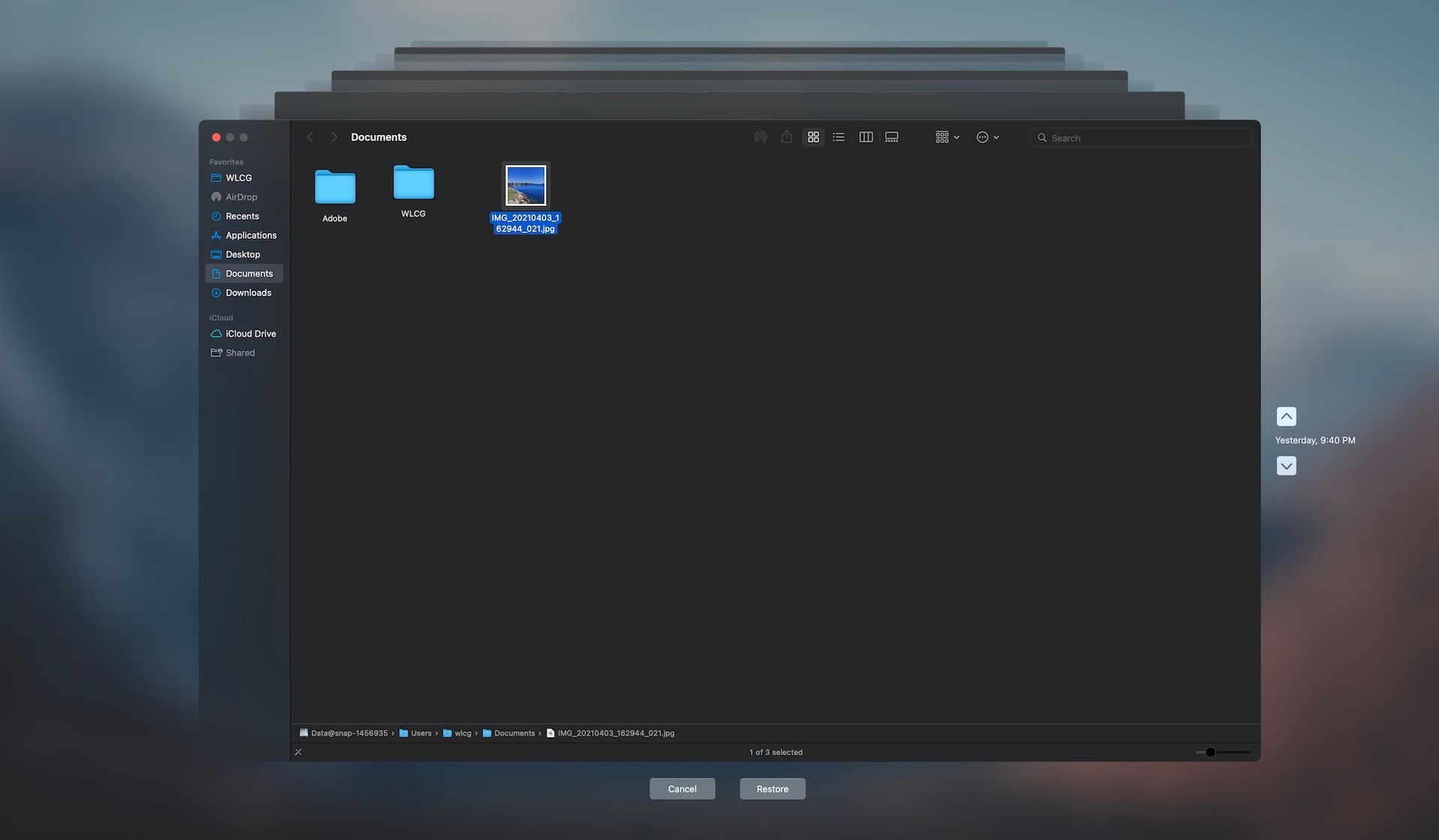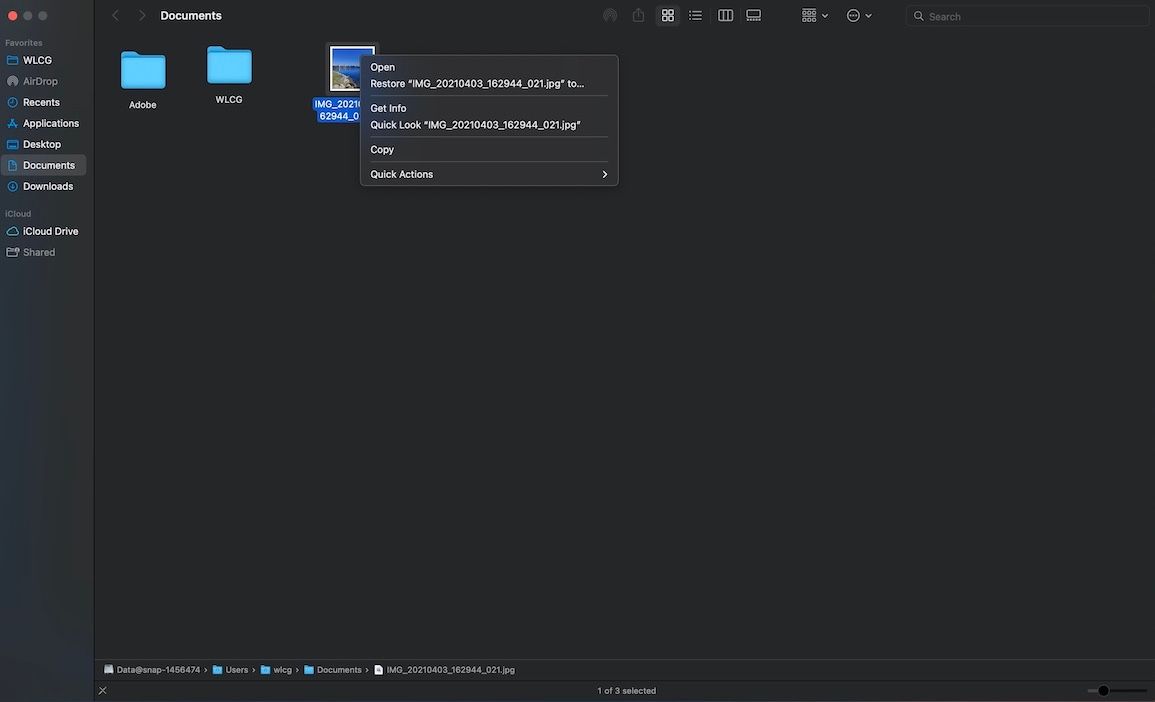Backing up the data on your computer is crucial. And if you use a Mac, you'll be glad to know there's a built-in backup tool called Time Machine that makes backing up your computer easy.
We'll show you how to set up a drive for use with Time Machine, how to set up and use Time Machine, and how to restore from a Time Machine backup.
Setting Up a Drive for Time Machine
For Time Machine backups, you can use an external hard drive connected to a USB or Thunderbolt port on your Mac. Backing up to a network drive is also possible through Time Machine.
For this overview, we're going to use an external hard drive. You can dedicate the entire external hard drive to your backups. However, you can partition an external hard drive to use part of it for Time Machine backups and the rest of the drive for file storage.
Adding Time Machine to the Menu Bar
For easy access to Time Machine, you can add it to the macOS menu bar on the desktop. Go to System Preferences > Time Machine in macOS to do this. Then, check the Show Time Machine in menu bar box.
Now, choose Back Up Now to manually start a backup.
If you haven't done a backup yet with Time Machine, the menu will say "Time Machine Not Configured." Select Open Time Machine Preferences to begin setting up your first backup.
Excluding Files/Folders From Time Machine Backups
Before starting your first backup, specify which files and folders macOS shouldn't include in your backups. For example, you might have some large files or unimportant files and folders you don't need to back up. Select Open Time Machine Preferences from the Time Machine menu or by going to Apple Menu > System Preferences > Time Machine. Then click Options.
Click the + icon to add a drive, file, or folder to the Exclude these items from backups list.
The backup disk itself is automatically excluded, as well as any other external drives. The list of excluded items applies to all backup disks added to Time Machine (we'll discuss setting up multiple backup disks in the next section).
When you're done adding items, click on Save.
Backing Up Your Mac Using Time Machine
Once you've set up your drive or connected a drive you've already set up, you might see a prompt asking if you want to use the connected disk to back up with Time Machine.
If your backup contains sensitive data, you should encrypt the backup. You can do this by either creating a password for the backup drive when you start the setup process or within Time Machine settings. Encrypting the initial backup can take quite a long time. It could be hours or maybe a few days, depending on how many files you have.
Click on Options in the Time Machine notification and choose Set up from the dropdown to start the process.
If Time Machine doesn't ask you to choose a backup disk when you connect the drive to your Mac, select Open Time Machine Preferences from the Time Machine menu on the menu bar. Or go to Apple Menu > System Preferences > Time Machine. Now, click Select Backup Disk.
Time Machine lists all available connected disks that have enough free space. Select the disk you want to use.
This is where you can also choose to encrypt your backup. Check the Encrypt backups box, then click Use Disk.
Backing Up to Multiple Disks and Encrypting
Time Machine allows you to back up your data to multiple disks. For example, if you keep one backup disk at home and another at work, you can add both to Time Machine. Click Select Backup Disk again in the Time Machine Preferences and select another disk.
Time Machine rotates the backup schedule among your disks and keeps track of the backup status on each separate disk. The next time you connect each disk, Time Machine backs up everything that changed since the last time you used that specific one.
If you chose to encrypt your backups or clicked Set up in the notification dropdown, macOS will ask for a backup password. Enter your password in the Backup password box and again in the Verify password box.
You can also enter a hint to help you remember your password in the Password hint box. Click Encrypt Disk to proceed
Running Time Machine Backups
Once you've set up your backup, Time Machine starts preparing the backup and turns on automatic backups. You can see the progress of the backup in Time Machine Preferences.
If you don't want to run automatic backups, uncheck the Back Up Automatically box in the Time Machine Preferences. The backup in progress will stop.
When automatic backups are off, you can manually start a backup by opening the Time Machine menu on the menu bar and selecting Back Up Now from the menu (as discussed earlier).
Your first backup may take a long time, depending on how many files you have. Once you've done the first backup, Time Machine backs up only the files that have changed since the previous backup so that future backups will be faster. Feel free to continue using your Mac while a backup is in progress.
You can also view the progress of the backup on the Time Machine menu.
The Time Machine icon on the menu bar indicates when Time Machine is backing up and when it's idle until the next automatic backup.
Time Machine uses notifications to keep you informed about the initial backup status. It displays a notification after the first backup is complete or if any issues arise during the initial backup, which you can dismiss.
When a backup finishes, Time Machine gives you information about your Oldest backup, your Latest backup, and when the Next backup will take place.
Pausing a Time Machine Backup
If you want to pause a backup and finish it later, select Skip This Backup from the Time Machine menu. Time Machine automatically tries to back up again at the Next backup time.
Restoring From a Time Machine Backup
Performing regular backups isn't going to help if you can't restore them. There are three ways to restore files from a Time Machine backup, so you can always recover your files.
Using Local Snapshots in Time Machine
Local snapshots in Time Machine allow you to restore data even when your backup disk isn't connected to your Mac.
Time Machine stores some backups as local snapshots on your main hard drive or other local drives. One snapshot saves every hour if Time Machine is set to backup automatically. If you're using macOS High Sierra or later, Time Machine also saves a snapshot before you install any macOS software update.
When you select Enter Time Machine from the Time Machine dropdown in the menu bar, you'll see files from both your external backup and the hourly local snapshots on your Mac's hard drive if your external backup drive is connected to your Mac. But if the backup drive is not connected, Time Machine shows you only the local snapshots.
Use the arrows on the right to scroll through versions of your selected file or folder. Then, you can choose a version of a file or folder and click Restore to get that version of the item.
You can also perform additional tasks when you enter Time Machine, such as restoring individual files and folders. But the feature also works for getting information about an item, previewing an item using Quick Look, and more.
Perform Regular Backups on Mac to Avoid Data Loss
Performing regular backups is critical to avoid losing vital data on your Mac, and Time Machine is an excellent built-in tool to get this done.
That said, it's not the only one available for Mac. There are also alternatives to Time Machine if you want other options for backing up your data.

